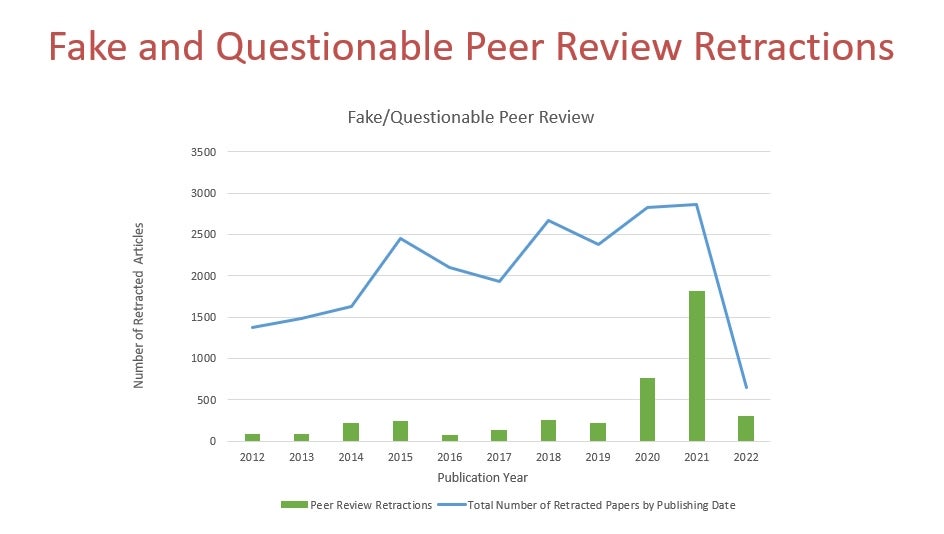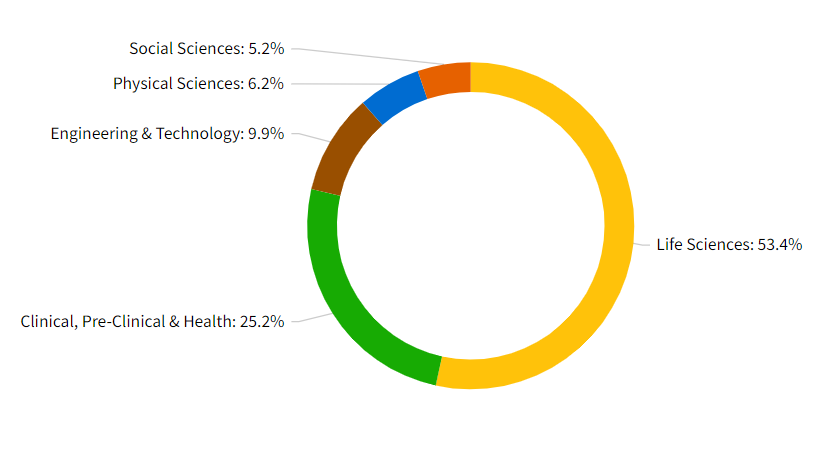Clarivate hosted a panel discussion focused on advances in transparent peer review that can help mitigate some of the challenges around peer review manipulation.
Trust is central to a functional research system, as it is to a functional society at large. However, a variety of threats to research integrity have been growing, including paper mills, image manipulation and the potential for AI abuse. This year’s Peer Review Week theme was “Peer Review and The Future of Publishing.” While there are various well-known issues with peer review (bias, reviewer fatigue, fraud, etc.), this panel focused on the advantages that transparency can bring in a time of fraudulent peer review practices. Panelists included Ivan Oransky (Retraction Watch), Ludo Waltman (Centre for Science and Technology Studies (CWTS) at Leiden University), Nicola Nugent (Royal Society of Chemistry), and Josh Dahl (Clarivate).
Fake peer review problem
Ivan Oransky, co-founder of Retraction Watch, highlighted the problem of “fake peer review.” According to Oransky, journals started to retract papers due to fake peer review starting in 2012. Fake peer review refers to manipulation of the peer review process, e.g., an author conducting their own peer reviews by posing as another researcher or having a friend conduct their peer review. Oransky recounted various high-profile cases where publishers retracted groups of papers due to fake peer review. He noted that while it’s encouraging that publishers are increasingly identifying these cases and retracting the papers, it’s disheartening that the number of retractions is increasing in recent years, despite the spotlight that has been placed on this unethical behavior. He called for publishers to continue to be diligent about preventing peer review manipulation, but also to be transparent when a retraction is needed. He shared this trend in retractions due to fake peer review, based on Retraction Watch data.

“If we’re thinking about trust in peer review, this sort of idea that it’s based on trust and therefore that readers and the general public should trust peer review, really breaks down when it becomes clear that there have been problems with the process that have not been addressed or that are not being addressed as well as they could be,” added Oransky.
Changes needed to curb fraudulent peer review practices
Ludo Waltman, a professor at CWTS at Leiden University, called for the research system to make fundamental changes that would eliminate the cause of fraudulent peer review practices. These changes include minimizing the publish or perish culture, promoting open research practices, and evaluating researchers on their entire contributions to knowledge beyond just publications. He believes that better policing of the fraudsters will only treat the symptoms and not cure the underlying disease. He noted incremental improvements like journals that are practicing transparent peer review or alternative models of publishing, like the eLife model. He highlighted initiatives like PublishYourReviews which encourage researchers to make their reviews public, even if the publishers don’t do so.
Nicola Nugent, Publishing Manager, Quality and Ethics at Royal Society of Chemistry (RSC), added the publisher perspective to the conversation. RSC is committed to open science and is planning to transform their journals to 100% open access in the coming years. Nugent listed the benefits of transparent peer review, including showcasing the high quality of peer review in their journals, educating early career researchers, and encouraging even higher quality peer review, amongst others. RSC defines transparent peer review as publishing comments and responses alongside the articles if the author and reviewer opt in. RSC started piloting transparent peer review in 2020 and partnered with Clarivate in 2022 to use the Transparent Peer Review service through ScholarOne™. This service provides the infrastructure and workflow for publishers to manage the transparent peer review process. Nugent found the implementation of the service to be simple. Every article on the RSC website with transparent peer review links directly to the Web of Science Core Collection™ article record where the review details can be viewed. See this example by clicking on the link for Transparent Peer Review: https://pubs.rsc.org/en/content/articlelanding/2023/SC/D3SC02544F
Here is an example of the review details:

How Transparent Peer Review works
Josh Dahl, Product Director, Clarivate, further explained how the Transparent Peer Review service works. Clarivate developed the service based on input from publishers using ScholarOne as their manuscript management system. According to feedback from ScholarOne users, many publishers would like to employ transparent peer review, but it is time consuming and complex for them to create in-house. Clarivate started developing Transparent Peer Review in 2018, shortly after it acquired Publons, a company focused on promoting and improving peer review. Since then, 159 journals have implemented Transparent Peer Review. Clarivate will continue to enhance the Transparent Peer Review functionality and enable any of the 8,000 journals who use ScholarOne to utilize it.
Over 30,000 articles to date have been processed and are viewable in Web of Science™. Here is the breakdown by broad subject area of the journals:

Source: InCites, Clarivate
The peer review information is integrated into the Web of Science Core Collection document record. The transparent peer review information is public and open to anyone without a subscription. Check it out here. Each Transparent Peer Review gets a DOI and is therefore discoverable and citable in its own right.
Web of Science recently made it easier to find articles with Transparent Peer Review using a quick filter. With any search a user conducts, they can easily filter to the records with Transparent Peer Reviews.

The review data are also linked to Web of Science Researcher Profiles. 35 million researcher profiles can be found in Web of Science Core Collection. These profiles include not only a researcher’s journal article history and citation metrics, but also their peer review activity, editorships, preprints and dissertations. Including all peer review activity, both the transparent ones and others, helps to recognize researchers for the time and effort they put into this important activity.
Upholding research integrity in peer review
This panel discussion brought together different sides of the publishing ecosystem to tackle a common challenge – preserving trust in peer review. While change may be slow in the research ecosystem, the various initiatives discussed are pushing peer review out into the open in ways never imagined decades ago. If sunlight is the best disinfectant, then making the entire peer review process for an article transparent should help to reveal problematic behavior and hold all stakeholders to a higher standard. Technology advances are enabling the peer review process to become part of a holistic view of research activity. Just as datasets, funding information and preprint versions are now found alongside a published article, transparent peer review may be on the way to becoming part of the standard publishing process.
Watch a recording of this webinar here.





